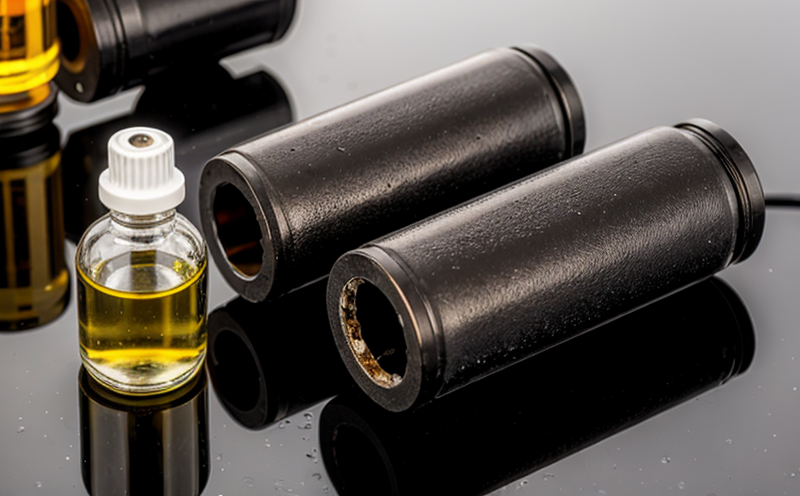EPA 8021 Aromatic Hydrocarbons GC Test in Water
The EPA Method 8021 is a standardized procedure designed to measure aromatic hydrocarbon compounds in water samples. This method employs gas chromatography (GC) for the analysis, which provides accurate and reliable results essential for environmental compliance and quality assurance.
This particular test is crucial for identifying and quantifying aromatic hydrocarbons that may pose significant risks to aquatic ecosystems or human health. The process involves several critical steps, including sample collection, preparation, extraction using solvent-based methods, and chromatographic analysis. The method ensures precision and accuracy by adhering strictly to the EPA's guidelines.
The test is particularly important in sectors such as water treatment facilities, oil refineries, and chemical manufacturing plants where there’s a high risk of hydrocarbon contamination. It helps regulatory bodies monitor compliance with environmental regulations. By using this method, laboratories can provide data that is crucial for understanding the extent of pollution and developing effective mitigation strategies.
The analytical process begins with the collection of water samples from various points in the treatment or production process. These samples are then prepared by extracting the aromatic hydrocarbons into a solvent. The extracted compounds are then injected into the gas chromatograph, where they separate based on their chemical properties and elute according to retention time.
The results obtained from this method provide valuable insights for decision-makers in industries reliant on water resources. By identifying specific aromatic hydrocarbons such as benzene, toluene, ethylbenzene, and xylene (BTEX), the test helps pinpoint sources of contamination. This information is vital for implementing corrective measures aimed at reducing environmental impact.
The EPA 8021 method ensures that results are comparable across different laboratories by prescribing detailed procedural steps. Compliance with these standards guarantees accurate and consistent data, which is essential in regulatory contexts. The method also allows for the detection of very low concentrations of hydrocarbons, making it suitable for sensitive applications.
For quality managers and compliance officers, understanding the intricacies of this test can help ensure that water treatment processes are meeting legal requirements. R&D engineers benefit from detailed analytical data to refine their processes further. Procurement professionals can use these results to select suppliers who adhere to stringent environmental standards.
Applied Standards
| Standard Reference | Description |
|---|---|
| EPA Method 8021 | United States Environmental Protection Agency's standardized procedure for measuring aromatic hydrocarbons in water. |
| ASTM E1594 | American Society for Testing and Materials' standard test method for determining the concentration of benzene, toluene, ethylbenzene, and xylene (BTEX) compounds in water by gas chromatography. |
| EN 12869:2005 | European Standard for sampling and analysis of water from distribution systems including hydrocarbon determination using GC. |
| IEC 62321-4 | International Electrotechnical Commission's standard for the testing of organic compounds in oil by gas chromatography. |
The EPA Method 8021 is widely recognized and utilized globally due to its stringent quality assurance protocols. It aligns with other international standards, ensuring consistency across different jurisdictions and enhancing reliability of results.
Benefits
- Compliance: Ensures adherence to environmental regulations set by governmental bodies like the EPA.
- Accuracy: Provides precise quantification of aromatic hydrocarbons, aiding in accurate monitoring and reporting.
- Reliability: Consistent results across multiple laboratories due to standardized procedures.
- Risk Mitigation: Identifies potential sources of contamination early, allowing for timely corrective actions.
- Data Quality: Reliable data helps in making informed decisions regarding water treatment and resource management.
The use of this method not only enhances compliance but also contributes to the overall environmental sustainability by providing actionable insights into water quality.
Industry Applications
- Water Treatment Facilities: Essential for monitoring and maintaining the purity of treated water.
- Oil & Gas Industries: Helps in assessing the impact of petroleum products on water resources.
- Chemical Manufacturing Plants: Useful for ensuring that byproducts do not contaminate local water bodies.
- Environmental Agencies: Provides critical data for environmental impact assessments and policy formulation.
- Public Health Authorities: Ensures the safety of drinking water sources, thus safeguarding public health.
The versatility of this method makes it indispensable in various sectors where water quality is a key concern. Its application spans from industrial processes to regulatory compliance, ensuring that all stakeholders involved can make informed decisions regarding water management and environmental protection.





